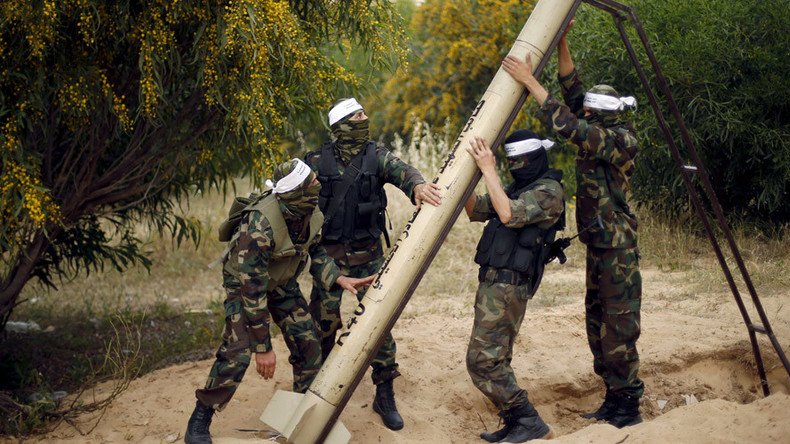Israel anticipates 230,000 incoming missiles during next war

A nationwide emergency drill has been announced in Israel, with the Israel Defence Forces (IDF) preparing to repel a volley of some 230,000 missiles. The Home Front Command will also test several other scenarios in preparation for a hypothetical war.
The Home Front Command disclosed scenarios that would be tested through next week’s nationwide drill. These scenarios include a full scale war with a simultaneous attack on several fronts, namely the Syrian Golan Heights, Gaza and Lebanon. The main goal of the drill was to ensure basic services could be kept running under fire and honing the cooperation between various military and civil institutes. However, preparations do not reflect an assessment that such conflict is imminent.
The Israeli military expects a possible 230,000 incoming ‘rockets’, more than a half of them most likely from an arsenal in the possession of Hezbollah. Some 95 percent of the projectiles are expected to be short-range (40-45 km) Grad missiles of various modifications and mortar shells. Such munitions are equipped with around 10 kg of explosives. The remaining 5 percent of the projectiles are expected to be long-range.
The Israeli military expects only 1 percent of incoming projectiles to hit buildings directly. The scenario includes a situation in which Israel suffers up to 400 casualties, though it’s unclear whether they would be civilians or military personnel.
According to the assessment, Hezbollah can fire up to 1,500 projectiles daily. The large majority of those are expected to hit open areas. Northern parts of the country would fall under heavy shelling, altthough dozens of long-range projectiles could hit central regions daily.
The Home Front Command’s preparations take into account the fact that Hezbollah is obtaining more and more precision-guided rockets, and hundreds of unmanned aerial vehicles in possession of possible opponents are also being taken into account. They are expected to be countered by the Israel Air force.
The Israel military has recently revised its rocket alert system. The number of areas, which can receive an alert has been increased from 265 to 3,000, greatly improving the system’s accuracy. Smaller areas affected by an alert have reduced response time from one minute to 30 seconds, and the number of civilians alerted by two thirds.
The worst case scenario involves a widespread evacuation of population from northern parts of the country. In such case 750,000 people would be relocated to other communities. The state would be able to house roughly 95,000 of them.
READ MORE: Damascus claims IDF warplane & drone shot down in Syria after attack, Israel denies
A recent surge in hostilities between Israel and neighboring countries provides a solid background for such drill. Multiple “retaliation fire” incidents have been reported during past few weeks. Some progress, however, is seen in a peaceful settlement process, with Israel and Palestine expressing willingness to resume peace talks.













